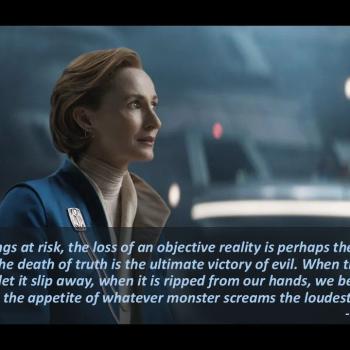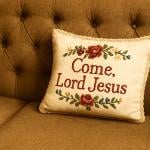Michael Whitenton has posted a review of my book The Only True God: Early Christian Monotheism in Its Jewish Context on his blog Ecce Homo. Since he has encouraged me to respond and turn his blog review into a bloggersation, I’ll add a few thoughts.
First, let me say that I’m very grateful for the review, and pleased to learn that keeping the book succinct did not undermine its persuasive power.
Next, I do want to try to offer some clarification in response to this statement: “McGrath points to a few inscriptions found in ancient Palestine that seem to suggest that Jews were worshipping pagan gods alongside the god of Israel at the dawn of the first century CE”. What I point to in chapter 2 is evidence that there were a range of forms of acknowledgement of the existence of “other gods”, including the acceptance of their relevance within limited domains, as well as their identification with the “only true God” in what might be called “inclusive monotheism” (although Richard Bauckham uses that term to mean something very different, and so I will have to return to this point on a later occasion). Since I emphasize the need to be precise about what we mean by “worship”, I am less than thrilled with this characterization of what I said, at least without further clarification. On the one hand, almost all Jews in the period in question would have refrained from offering sacrifice to any deity they understood to be other than YHWH alone. On the other hand, when it came to matters other than animal sacrifice, a range of views seem to have existed within Judaism. The Greek word most frequently translated as “worship” properly means “prostration” before another figure, and on that issue we can find evidence of a range of views and practices.
In his discussion of chapter 3, Michael refers to 3 Enoch (and other Rabbinic sources) as possible counter-evidence to my assertion that mediator figures were not controversial in the New Testament era. 3 Enoch 16 is of course a key text related to Jewish mysticism and the “two powers” heresy, and on p.89 (in the context of my discussion of “two powers”) I emphasize the late date of that work, and in particular of the passage in question. And so I think it is fair to summarize my argument as being that mediator figures were not controversial in the New Testament era, but became controversial in at least some circles at some later point. The evidence from 3 Enoch in my view provides supporting evidence rather than evidence to the contrary. I might also add that it seems unlikely that the same exact debate would have continued from New Testament times until 6 or more centuries later, without interruption or significant change!
As for the point that more discussion of primary source material outside of the New Testament could have been provided, I’m sure this is true. I tried to focus the most attention on neglected evidence, such as the statements of non-Jews about Jewish beliefs and practices, and the inscriptional and epigraphic evidence, rather than simply revisiting texts that are well-known, and so inevitably some well-accepted understandings of primary source material were at times assumed rather than defended. Of course, presumably one reason Michael was left with the impression that I did not always cite primary source material when necessary is his aversion to endnotes. While I sympathize with his point about footnotes vs. endnotes, it was primarily the desire to include some lengthy notes (for the sake of those who were interested in certain minute details that would be unlikely to interest most readers) that led to the decision to opt for endnotes. The trouble caused thereby is remedied, in my experience, through the use of a second bookmark. I will gladly send Michael one (or two) if he would find that useful. 🙂
Finally, when it comes to the question of the doctrine of the Trinity, I would put my position briefly as follows (and I invite further discussion): I do not think that the New Testament material in any respect made it inevitable that the Nicene Creed’s understanding of God as Triune would become the orthodox viewpoint. The main reasons for my thinking this way is my conviction that the debates that led to the Council of Nicaea were focused on answering questions that were not raised (much less answered) in the New Testament period, and the length of time spent trying out various options over the intervening centuries is inexplicable if all Christological questions had already been answered in the New Testament. It seems clear from both the length and the ferocity of the Christological debates of the second, third, and fourth centuries that we are dealing with what Hanson rightly called the search for the Christian doctrine of God, and not merely the defense of something that already existed. But having said this, I do not think that determining what the New Testament says on the matter is the only consideration when asking whether Trinitarianism is a helpful and appropriate theological image. Personally, I find thinking of God in Trinitarian terms particularly helpful in making sense of the notion of God as eternal love, since it is hard to envisage love (or at least, a love that is not egocentrical) without there being more than one person. But ultimately I consider such imagery metaphorical and recall with fondness a question John Macquarrie
asked about some of the church’s Christological and Trinitarian language, which appropriately burst my theological bubble in my undergraduate days. He rightly asked, with respect to Christian thinking about natures and persons, and terms like enhypostatic and anhypostatic, how any human being could claim to know such things about God.
And so my book is mainly focused on answering historical questions, and if there is a contribution to the tasks of Christian theology and of Jewish-Christian dialogue, it is to emphasize that questions about what we should believe and how we should interact in the present cannot be resolved only by appeal to Scriptural texts. The development of Jewish and Christian monotheism(s), and of the church’s Christology, illustrate well that Jewish and Christian doctrines never remained static, and were always formulated in a dialogue between traditions and texts on the one hand, and contemporary issues, needs and concerns on the other. That is how it has always been, and perhaps that is how it should be.












